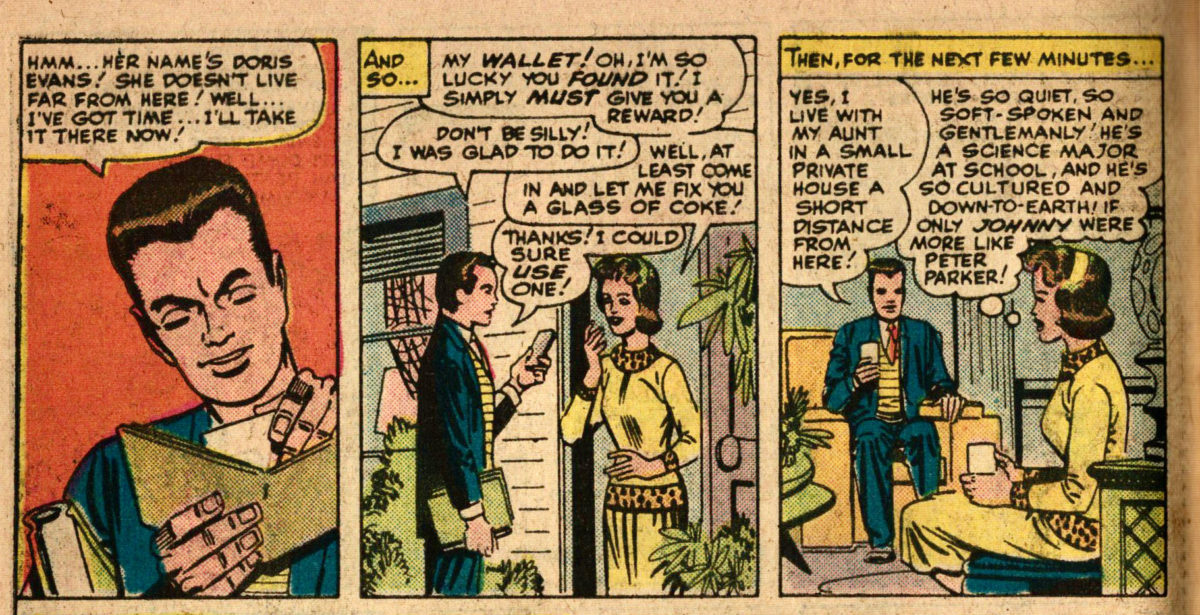Featuring: Thor
Release: October 5, 1965
Cover: December 1965
12 cents
Fantasy to dazzle thy senses, written by: Stan Lee
Drama to quicken thy pulse, illustrated by: Jack Kirby
Beauty to nourish thine eyes, embellished by: Vince Colletta
Balloons to compound thy confusion, lettered by: Artie Simek
16 pages
| Previous | #398 | Next |
|---|---|---|
| Journey Into Mystery #122, Story B | Reading order | Journey Into Mystery #123, Story B |
| Journey Into Mystery #122, Story B | Journey Into Mystery | Journey Into Mystery #123, Story B |
…It’s like being in the center of the universe! Like being part of– eternity!
Notice the credits use “thy” and “thine” everywhere, words Thor is today famous for using, but that Stan is only slowly starting to pepper into his speech. On this very page, he refers to Hobbs as “you” and not “thee”.

Where did we leave off? Harris Hobbs kidnapped Jane to get a picture proving Thor was Donald Blake. Thor seems to have forgiven Hobbs and agreed to take him to visit Asgard. Meanwhile, Loki and the Absorbing Man have declared war on Asgard. When we left off, the Absorbing Man was confronting Odin with his own power.
Continue reading “Journey Into Mystery #123”



























